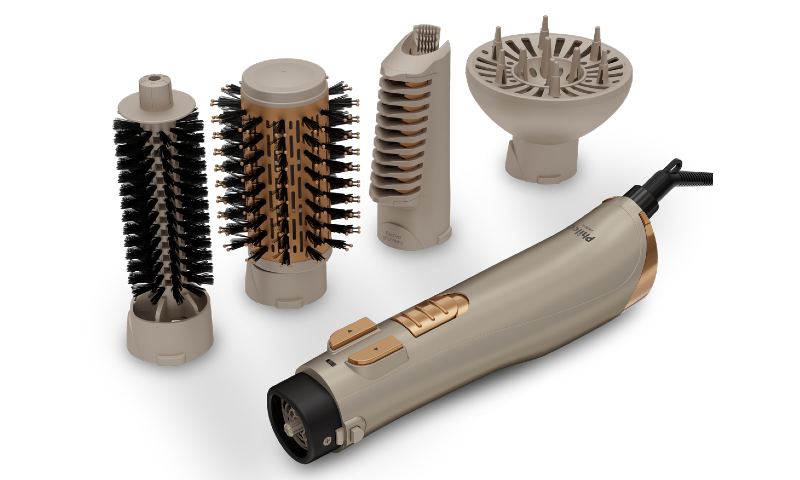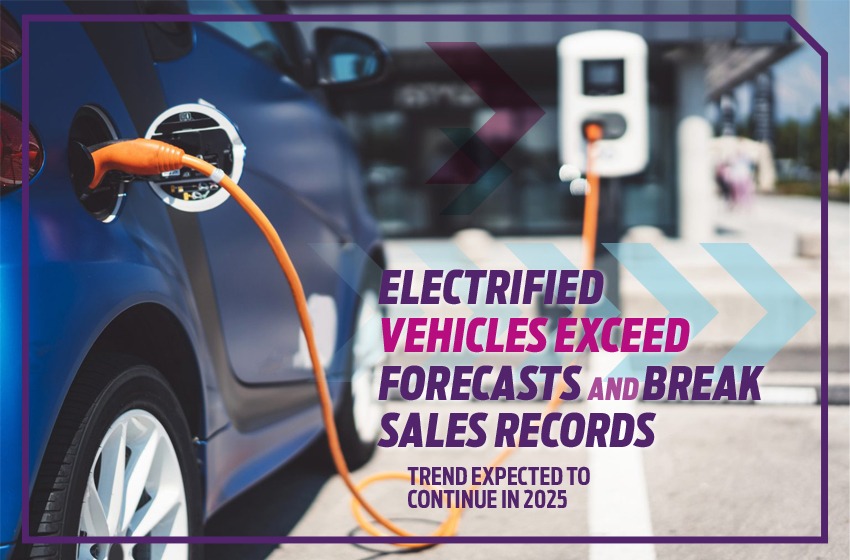
Eletrocar Supplement
Electrified vehicles exceed forecasts and break sales records. Trend expected to continue in 2025
by Joel Leite
Even optimistic forecasts did not consider such significant growth in sales of electrified vehicles. The year 2024 ended with a historic volume: 177,358 units were licensed, an 89% increase over 2023 (93,927).
And December sales indicate that 2025 should keep the segment growing continuously: 21,634 were sold in the last month of the year, a volume well above the monthly average, which was 14.7 thousand units.
“We have a lot to celebrate. It was a spectacular year for electric mobility, a year of sustainable growth and very impressive numbers”, says Ricardo Bastos, president at Brazilian Electric Vehicle Association (ABVE).
The above figures do not include commercial vehicles: 408 trucks and 314 buses were also sold, all pure electric.

The plug-in is in the lead
With consumers’ doubts regarding the efficiency of pure electric vehicles in terms of refueling (after all, the infrastructure is still in its infancy), the plug-in ended up becoming the preference of Brazilians who are betting on electrification. The hybrid, which offers the possibility of external recharging of the battery, had the largest share last year: no less than 71% of sales were of the plug-in model, with 125,624 vehicles registered, a growth of 140% over 2024.
Hybrids without external recharging (HEV, HEV flex and MHEV) had a 29% share (51,733), including micro-hybrids, which use a battery of just 12 volts and have created controversy in the market.
Sales in 2024
Segment Units Share
PHEV 64.009 36,09%
BEV 61.615 34,74%
HEV flex 20.277 11,43%
MHEV 16.185 9,13%
HEV 15.271 9,13%
Is a micro-hybrid an electrified car?
With the launch of the Pulse Hybrid and the Fastback Hybrid, Fiat introduced a new category of electrified car that ABVE classifies as a micro-hybrid, but this has created a technical controversy, as there are doubts as to whether they can be considered electrified vehicles, since they have a battery of only 12 volts and do not have electric traction. For Ricardo Bastos, these are cars that do not provide the consumer with a real electromobility experience.
In any case, due to Fiat’s power, sales in this segment tend to grow. In less than two months (the launch was in early November 2024), 3,828 units were sold.
ABVE considers electrified vehicles to be technologies with a significant degree of electrification: 100% electric (BEV), plug-in hybrid (PHEV), pure hybrid (HEV), gasoline/alcohol hybrid (HEV Flex), and mild hybrid (MHEV). And it assesses that some of the new models that are being launched as hybrids, strictly speaking, cannot be considered electrified.
“Not only do they not offer consumers the advantages of driving a true electric vehicle, but they also make little or no contribution to reducing carbon dioxide (CO²) emissions and other greenhouse gases,” explains Ricardo.
Used car market begins to emerge
Although the presence of electric cars in the Brazilian market is still in its infancy, important businesses are already beginning to emerge in the used car sector. The good news is that contrary to what many people assumed, electric cars are showing a good resale value.
The Highest Resale Value Seal, which has been evaluating vehicle depreciation in the Brazilian market for 23 years, revealed that the segment follows the behavior of combustion cars. The 2024 Certification, awarded to the winners last December, highlighted the Ford Mustang as the most valued pure electric car on the market, with depreciation of only 5.2% after one year of use, while the Volvo XC90 plug-in had even lower depreciation, only 3.8%. It was the best performance in the Brazilian market, including combustion models.
The increase in sales of used electrified vehicles was significant in 2024. There were 67,797 hybrid units, an increase of 86.8%, and 10,733 pure electric vehicles, an increase of 212% compared to the previous year.

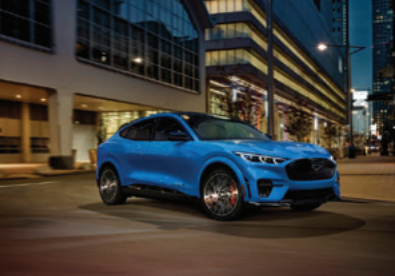
Best-selling used hybrids
- Corolla 1.248 units
- Corolla Cross 1.145
- BYD Dolphin 636
- Volvo XC60 465
- BYD Song Plus 340
- Toyota Rav 4 283
- BMW Série X 270
- Volvo XC40 222
- Tiggo 5X 188
- Tiggo 8 171
Best Selling Used Pure Electrics
- BYD Dolphin 636
- Volvo XC40 103
- GWM Ora 99
- BYD GS 65
- Nissan Leaf 61
- BYD Yuan 59
- Porsche Taycan 58
- BMW X 57
- Mini 55
- Volvo C40 40
Although electric vehicles are seen as the future of sustainability, with the potential to reduce dependence on fossil fuels and minimize environmental impacts, the challenges for their actual implementation in Brazil are still great.
Challenges for electric cars
Cristiane Pimentel, from the Institute of Electrical and Electronics Engineers (IEEE), a global organization that brings together scientists focused on technology for the benefit of humanity, states that electric cars are expanding rapidly in Brazil, but face significant challenges for large-scale adoption.
“Unlike developed countries, which have robust technologies and advanced infrastructure, Brazil faces economic and territorial peculiarities that make the transition more complex. To make electric mobility viable in the country, expanding the network of charging stations is essential.”
With a network still concentrated in large cities, the expert believes that the process of implementing charging stations could take five to 15 years. In any case, the network of electric charging stations in Brazil has been growing significantly, making electric mobility more accessible.

Electric charging stations, a network under construction
The electric charging station network registered 12,137 charging points for electric vehicles in 2024, according to Tupi Mobilidade, a leading app in the sector in Brazil and Latin America, reducing uncertainties regarding the use of electric vehicles over longer distances. Of these, 10,621 are slow-charging stations and 1,516 are fast-charging stations.
It is still a very limited network, considering the size of the Brazilian territory, but the main urban centers of the South and Southeast Regions (São Paulo, Rio de Janeiro, Curitiba, Belo Horizonte and Porto Alegre) can consider themselves well served.
Some brands have expanded their networks by installing their own charging stations to serve their customers and users of other brands, with stations installed in strategic locations, such as dealerships, supermarkets and shopping centers. Energy and technology companies, such as Enel X, Weg, Eletrobras and Raízen, have also set up their own networks.
Charging points can be located using apps, some of which indicate the charging time and operating hours, as well as the type of charger: AC (slow) or DC (fast).
Davi Bertoncello, director at Tupi, believes that the network of electric charging stations will continue to grow significantly, but not as in recent years, when the numbers doubled. He estimates that by 2025 there will be an increase in ultra-fast charging stations and that Brazil will have 20,000 points installed by the end of the year, four thousand of which will be DC.
In addition, the use of portable chargers can alleviate the pressure to expand the network of electric charging stations, in addition to making life easier for users. In the case of the plug-in model, charging at home or at work is a good alternative, since the use of electricity is not essential for driving. On the contrary, the owner of the plug-in can even use the energy contained in their car’s battery for domestic use.
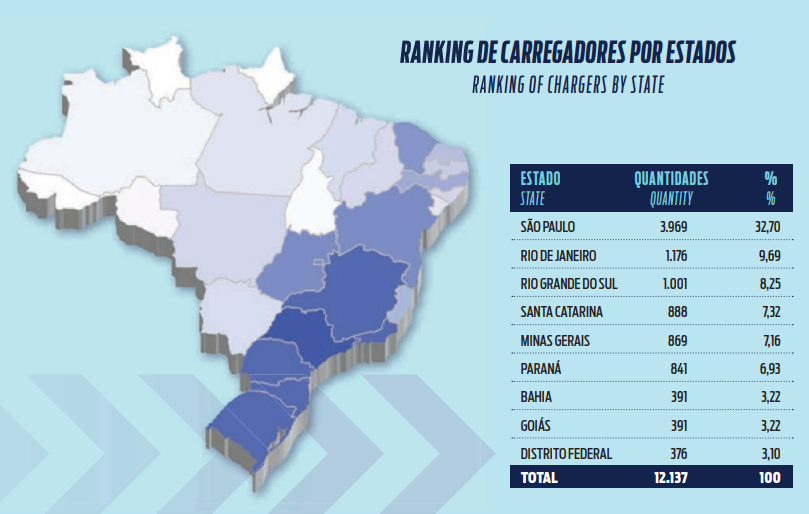
A paella powered by the Haval H6
We conducted an experiment with the GWM Haval H6, the best-selling hybrid in Brazil in 2024, with 22,893 units registered. We used the battery of this plug-in model as a power source to prepare a paella in an electric cooker connected to the car. And it all worked out!
The system can be used in various situations, such as camping in a place without electricity, providing lighting, artificial ventilation, a mess-free barbecue and even making coffee. And it can also be very useful in case of a power outage at home. The Haval H6 battery works as a power source, allowing you to connect any type of device, at 220 or 110 voltages.
Operating the power source is very simple: the car comes with the V2L cable, which must be connected to the same input as the battery charger. On the dashboard, activate the Energy Consumption Assistant and then enable V2L on the multimedia system.
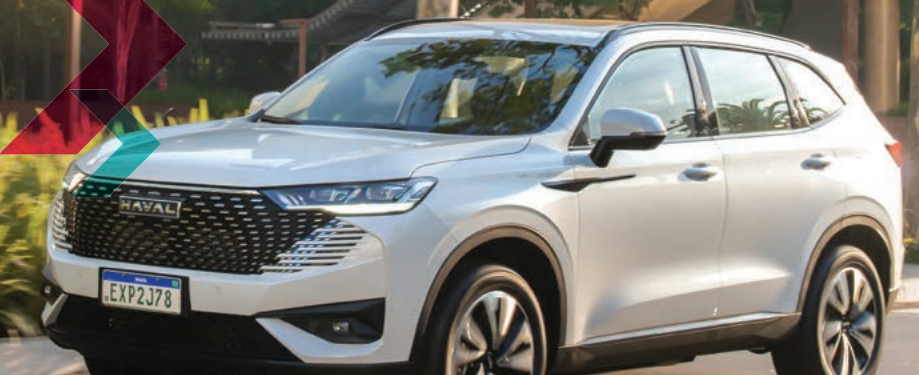

Electricity is the solution for urban freight transport
The use of electric vehicles in large urban centers has been a perfect fit for transporters and delivery people. In recent times, large delivery companies have started to include vans and other commercial vehicles in their fleets to meet the need to reduce emissions. In some cases, the old fleets of combustion vehicles have simply been replaced by zero-emission models.
It is no coincidence that several brands have started to meet this growing demand, as the number of companies operating pure electric vehicles is immense: Ambev, Mercado Livre, Magazine Luiza, Carrefour, Pão de Açúcar, Amazon, Correios, DHL and so on.
Ford has been serving large fleets since 2023. In March of last year, it began selling the E-Transit in van and chassis cab models, totaling 360 units registered to date.
The company’s main customers are in the logistics and e-commerce segments, implementing ESG initiatives and reducing fleet operating costs. The vehicle offers multiple applications and flexibility to be converted into passenger or ambulance transport. The chassis version is intended for areas with difficult access and road operations, and can accommodate implements such as box trucks, platforms and dry cargo.
Transit is the leader in the electric commercial vehicle segment for up to five tons and over 6 m³, and growth is projected for this year. Stellantis offers the Peugeot ë-Expert, the Citroën ë-Jumpy and the Fiat e-Scudo. The three models are equipped with the same 136 hp electric motor with 26.5 kgfm of torque. They are also equipped with the same 75 kW battery. BYD serves the segment with the eT3, with a load capacity of 808 kg and 3,300 liters of volume and runs 170 km on a single battery charge. And JAC offers two models in Brazil: The E-JV5.5 (1,020 kg of load capacity and 300 km of autonomy) and a van with a 204 hp engine.
Renault electric cars are elected European Cars of the Year
Two pure electric cars from Renault have won the European Car of the Year 2025 competition, awarded by the Coty Car of the Year jury: the 5 E-Tech and the Alpine A290. Both are built on the same Ampere Small platform, the only one in Europe.
The Renault 5 competed with six finalists: Alfa Romeo Junior, Citroën C3-ëC3, Cupra Terramar, Dacia Duster, Hyundai Inster and Kia EV3, all of which are electrified, the majority of which are 100% electric.
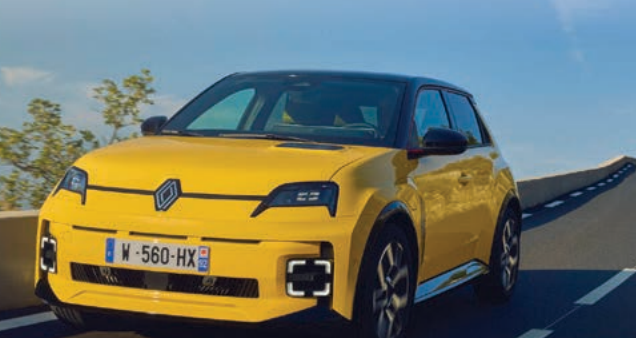
Source: Eletrolar News Magazine – Edition #165



